St. Paul's Episcopal Church and the Burning of Norfolk
Introduction
Text-to-speech Audio
Images
Cannonball wedged into the side of St. Paul's Episcopal Church in Norfolk.
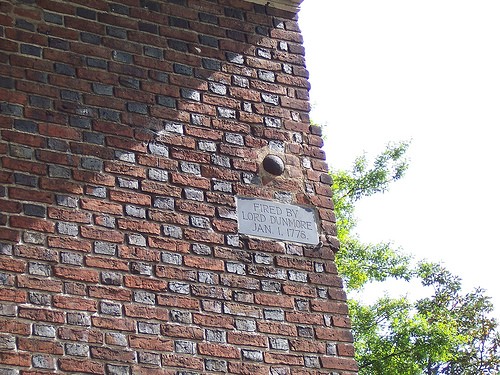
Map of the area near Norfolk at the time of the American Revolution.
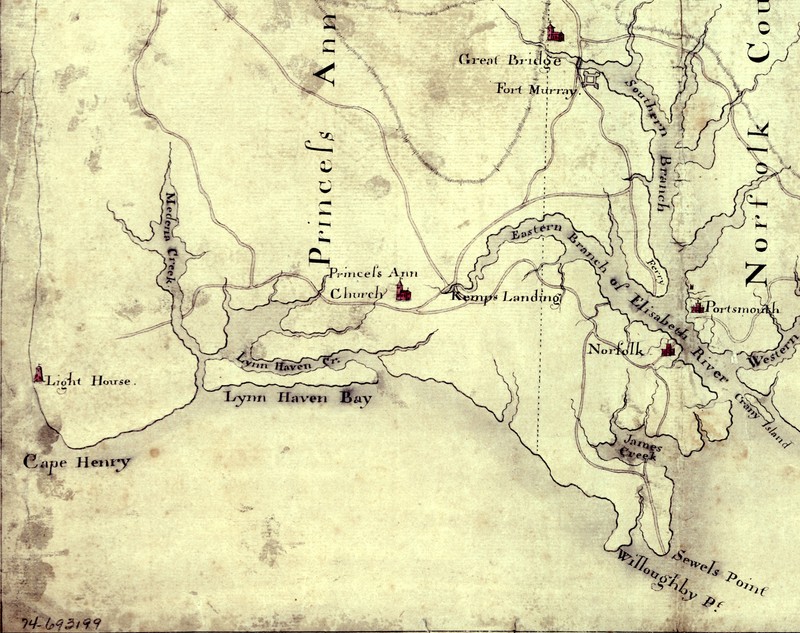
John Murray, 4th Earl of Dunmore. Last English governor of Virginia and in command of British forces during the burning of Norfolk.
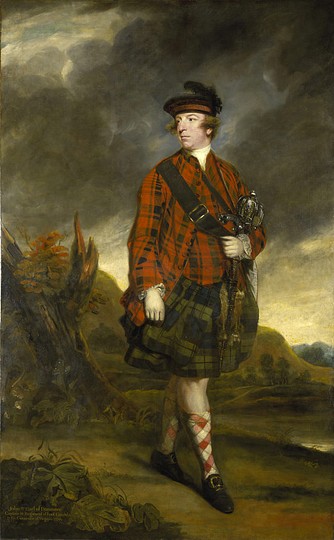
HMS Liverpool, the British warship commonly believed to have fired the shot that lodged in the wall of St. Paul's Church.
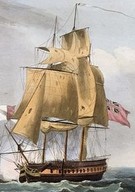
The Ethiopian Regiment was a British force comprised of freed slaves. Lord Dunmore had promised freedom to slaves of rebellious colonists in exchange for British military service.
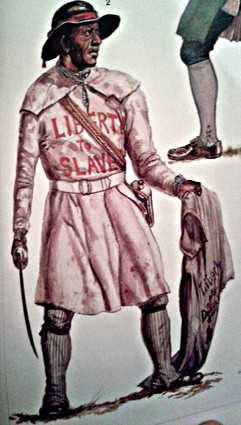
Major General Robert Howe, in command of the rebel militia occupying Norfolk.
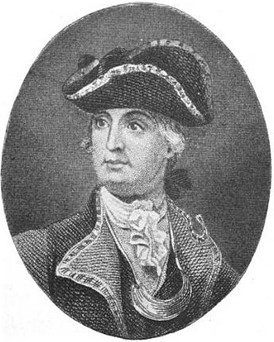
St. Paul's Church in a 1907 postcard. Note the cannonball lodged in the upper right.
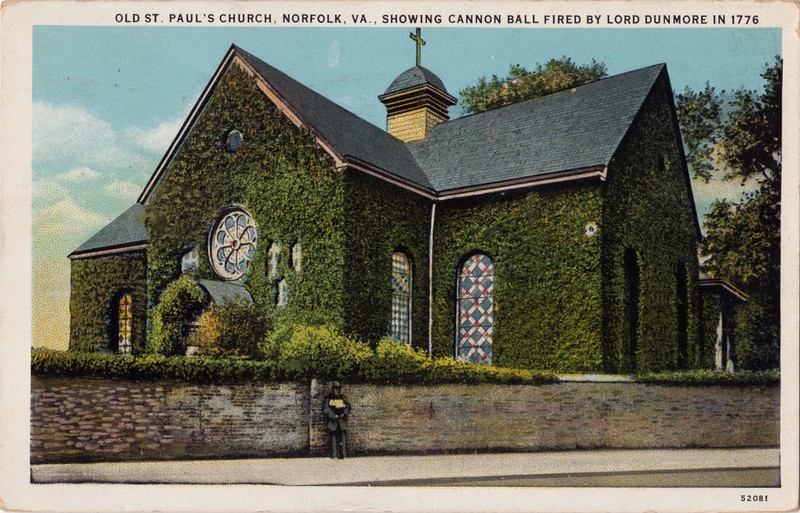
St. Paul's Church as it appears today.
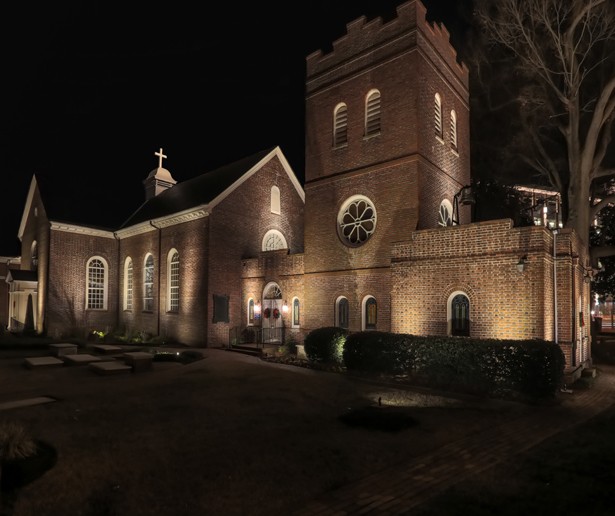
An artist's rendition of the burning of Norfolk.
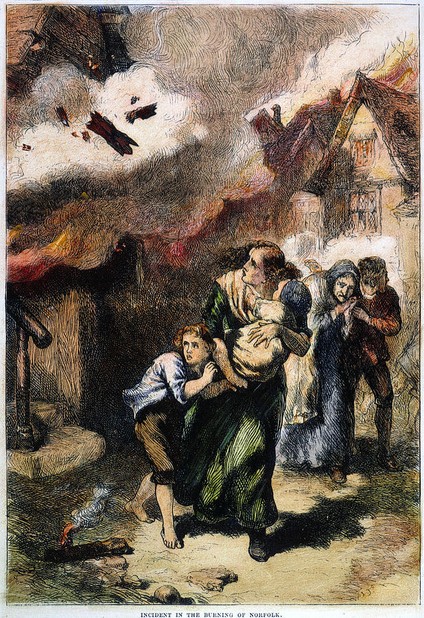
Colonel William Woodford, who commanded Patriot troops at Great Bridge, and second-in-command during the burning of Norfolk. He would be captured later in the war, and died on board a British prison ship.
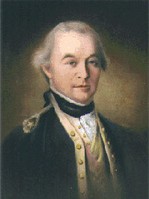
Marker at the site of the Battle of Great Bridge.
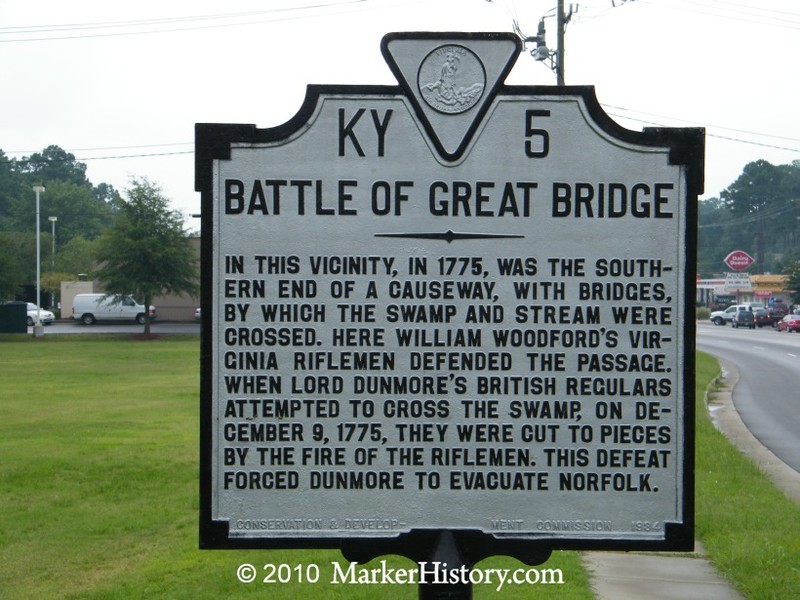
Great Bridge in 1850. Note the swampy terrain on either side of the bridge, which forced the British assault into a narrow front and resulted in many casualties.
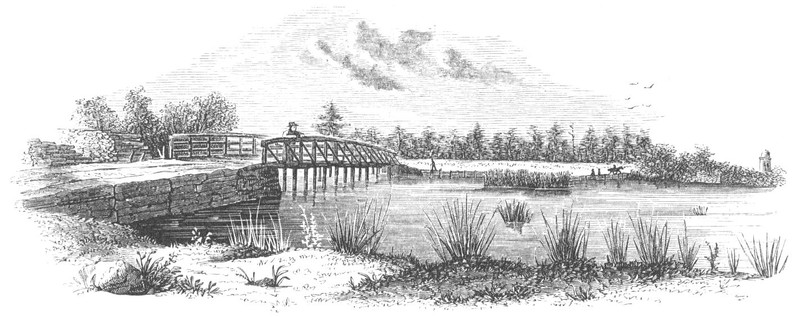
Field uniform of a British Marine of the Revolutionary War. Dunmore's landing parties during the burning of Norfolk would have looked much like this. From "The Illustrated Encyclopedia of Uniforms from 1775-1784: The American Revolutionary War."
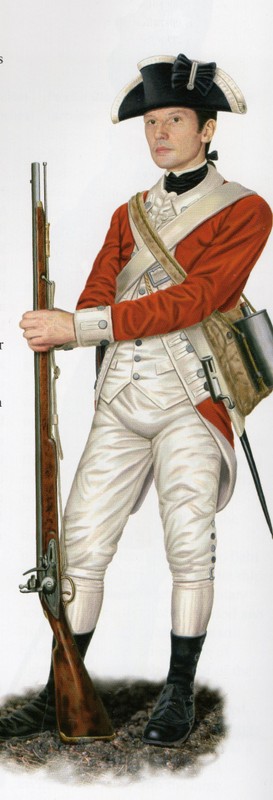
Typical uniform of a Royal Navy captain. From "The Illustrated Encyclopedia of Uniforms from 1775-1784: The American Revolutionary War."

Backstory and Context
Text-to-speech Audio
In early 1775, as the tensions were mounting in New England that would lead to shots being fired in Massachusetts, strain was also growing between Patriot factions in VIrginia and representatives of the British Crown. Indeed, Virginia militias had begun recruiting troops in March 1775, a mere month before the battles of Lexington and Concord brought open revolution to the colonies.
Fearing that Patriot forces would seize gunpowder stores, the Royal Governor of Virginia, Lord Dunmore, commanded his troops to remove powder from an armory in Williamsburg and place it on board a British ship, provoking the local Patriot militias to outright defiance--though violence did not yet break out.
The town of Norfolk itself, a prosperous port, had strong Loyalist sympathies, but Dunmore proceeded cautiously until he received reinforcements from General Gage in Boston. These new troops were directed to begin raiding the countryside around Norfolk in October 1775, looking for Patriot weapons and supplies. The outraged rebels responded by capturing a British ship that had run aground in Hampton, Virginia, and killing several sailors in the ensuing gunfight.
DUNMORE'S PROCLAMATION
In response to the actions of these freshly-emboldened Patriots, Dunmore issued a proclamation on November 7, 1775:
"I do, in Virtue of the Power and Authority to ME given, by his Majesty, determine to execute Martial Law, and cause the same to be executed throughout this Colony"Dunmore's declaration of martial law also went on to promise freedom to "indentured Servants, Negroes, or others, (appertaining to Rebels,)" who joined British military service. This measure, intended to cow the colonial populace and deprive them of their means of insurrection, backfired. Virginia's economy was largely dependent on slave labor, and many colonists who had remained neutral were incensed by what they perceived as an attempt by Dunmore to incite a slave rebellion.
Virginians responded by proclaiming in kind:
"by an act of the General Assembly now in force in this colony, it is enacted, that all negro or other slaves, conspiring to rebel or make insurrection, shall suffer death, and be excluded all benefit of clergy."Despite the anger of the general populace, Dunmore successfully recruited among Virginia Loyalists. Between his new proclamation and local Tories, he formed the Queen's Own Loyal Virginia Regiment and Lord Dunmore's Ethiopian Regiment (comprised of roughly 200 former slaves and commanded by white officers). By November 30, he felt his forces were strong enough to "reduce this colony to a proper sense of their duty."
THE BATTLE OF GREAT BRIDGE
By early December 1775, substantial Patriot forces under Colonel William Woodford were in a stand-off with Dunmore's troops at Great Bridge, outside Norfolk. Impatient to sweep them away, and concerned about new reports that the Patriots had received some artillery, Dunmore ordered an attack on Woodford's fortified encampment.
Dunmore had been misinformed as to the Patriots' strength, and believed their numbers to be only half of the 900 troops Woodford held in a strong position on the opposite bank. A frontal attack by British Grenadiers across the bridge cost them dearly--perhaps as many as 100 dead, with only one Patriot wounded. Furious, Dunmore retreated his forces back to Norfolk and then evacuated his troops from the city, placing them on board the ships of a British fleet at anchor in the harbor.
THE BURNING OF NORFOLK
On December 14, only a few days after Dunmore had withdrawn to his ships, Patriot troops moved into the city. Woodford's men had received reinforcements from North Carolina and now the combined force of 1,200 men was under the command of Colonel Robert Howe. In examining the town, Howe and Woodford recommended to Congress that Norfolk be destroyed, as there was little hope for even a large Patriot force to successfully defend against a mobile British contingent capable of flanking the city by sea. Luckily, Dunmore would soon give them the excuse they needed to carry out Norfolk's destruction.
Dunmore's fleet was joined shortly by the HMS Liverpool, bearing fresh supplies and munitions. He positioned his four warships in a threatening line along the Norfolk waterfront, broadsides turned toward the city. Citizens began to evacuate--as most of the Loyalist population had fled to the ships with Dunmore, there was little to prevent the Governor from firing on the city. In the meantime, Patriot sharpshooters hidden around Norfolk boldly picked off British officers and sailors who came above decks on the crowded ships, driving the frustration of the British commanders to new heights.
On Christmas Eve, 1775, an ultimatum was delivered to the Patriots entrenched in Norfolk: allow British forces to land and purchase food and supplies, or the goods would be taken by force. The resources of the British fleet were being seriously overstrained by the many civilians who had fled on board and Dunmore could hold out little longer. Colonel Howe refused.
FInally on New Year's Day, 1776, the British ships opened fire. From 3:15pm until 2am the following morning, over a hundred British cannon rained destruction on the city of Norfolk. Under cover of shot and shell, landing parties of marines launched from the British ships and attempted to recover supplies amid the bedlam. Battles broke out among the warehouses along the wharves, and British troops set fire to buildings.
Though most of the British assaults were repulsed by Howe's men, the destruction was not complete. Patriot troops, given license by the chaos, looted and burned the city as well, often feeling justified knowing that many of the houses had belonged to Loyalists. Soon much of the settlement was ablaze, of which Howe wrote, "the whole town will I doubt not be consum’d in a day or two.”
His attacks repulsed, Dunmore pulled his ships out of the harbor and retreated, leaving Virginia entirely by August of the following year. Howe and Woodford stayed on in Norfolk until February, systematically destroying the remnants of the town until only a burnt-out skeleton remained. His letters to Congress omitted the role of Patriot forces in the town's destruction, allowing public outrage to foment about its wanton destruction at the hands of the cruel British. By the time a true picture emerged to the colonists in 1777, the war was in full swing.
Cite This Entry
Jeffries, Colton et. al. "St. Paul's Episcopal Church and the Burning of Norfolk." Clio: Your Guide to History. September 7, 2017. Accessed April 2, 2025. https://theclio.com/entry/9753
Sources
2. Murray, John. Lord Dunmore's Proclamation. Encyclopedia Virginia. July 25, 2013. Accessed September 07, 2017. https://www.encyclopediaVirginia.org/Lord_Dunmore_s_Proclamation_1775. Primary Source
3. Bruton, Noma. American Revolutionary War: The Service of Private John Threadgill. Sagacity Etc.. March 14, 2014. Accessed September 07, 2017. https://sagacityetc.com/tag/burning-of-norfolk/.
4. Tucker, George Holbert. Norfolk Highlights 1584 - 1881. Norfolk Historical Society. Accessed September 07, 2017. http://historicforrest.com/norfolkHistoricalSociety/highlights/22.html.
5. The Battle of Great Bridge & The Burning of Norfolk. American Military History Podcast. Accessed September 07, 2017. http://americanmilitaryhistorypodcast.com/the-battle-of-great-bridge-the-burning-of-norfolk/. Ep. 012
6. British Naval Fleet Attacks Norfolk, Virginia. History.com. Accessed September 07, 2017. http://www.history.com/this-day-in-history/british-naval-fleet-attacks-norfolk-Virginia.
7.Chartrand, Rene. American Loyalist Troops 1775-84. Men-At-Arms. New York, NY. Osprey Publishing Ltd., 2008. 11, 25
8.Smith, Digby. Kiley, Kevin F.. An Illustrated Encyclopedia of Uniforms from 1775-1783: The American Revolutionary War. London. Lorenz Books, 2010. 220, 248

